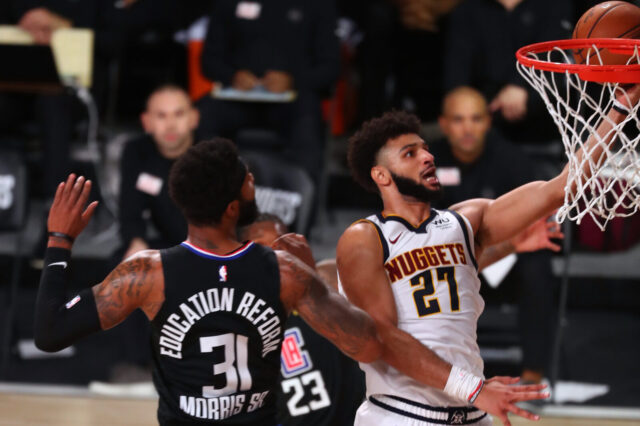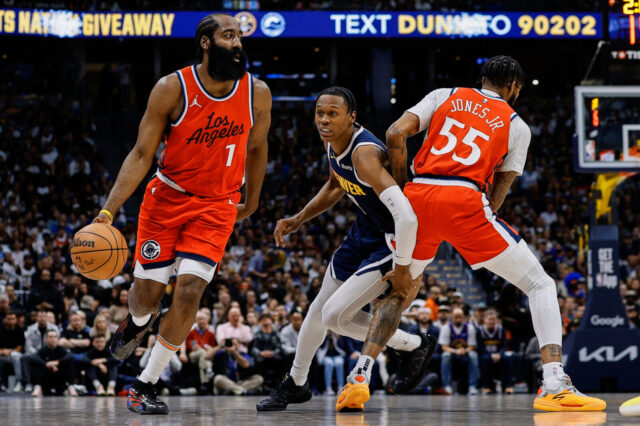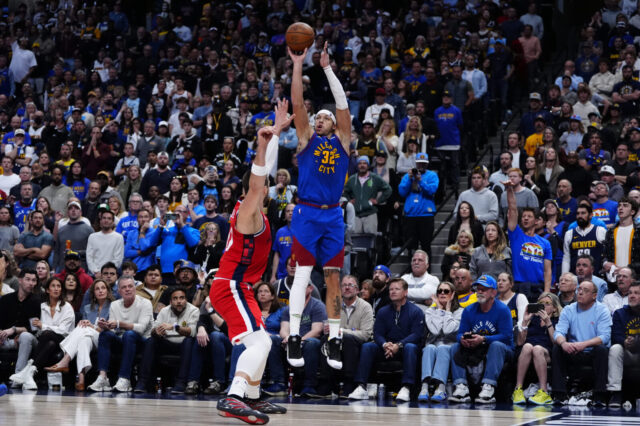In late January of last year, Michael Malone reflected on his team’s recent struggles on offense and arrived at the conclusion that he had been over-orchestrating the offense from the sideline. The team was running too many “plays” and had become too predictable. He wanted the team to operate offensively with more creative freedom and more trust.
“This is one thing I keep on saying to myself – I am calling way more play calls than I did my first two years,” Malone told reporters after a team practice ahead of their matchup with the Portland Trail Blazers. “We have gotten away from just playing the game. When you play the game you’re hard to guard cause it’s not a play call where you can take it away. It is…teams didn’t know what the hell we were doing last year. We just played.”
The change was a welcome one in the Denver Nuggets locker room. “I think it’s the best decision coach has made with our offense through the season,” Jamal Murray told BSN Denver in reference too Malone’s decision. “When we run so many plays, we get caught just running the play and forgetting the read but when we’re just playing off each other we make reads and communicate throughout the game, through each other.”
But what does it mean for a coach to call fewer plays?
An offense would fall apart without any structure. The change Malone and Murray were referring to wasn’t one where the team would just abandon all structure to the offensive end, but rather, one where the role of the play call became different. Rather than provide a strict road map, play calling would provide a framework for the players to operate within. Plays would help elevate a team’s creativity, not limit it.
One of Denver’s most common plays is called ‘Delay Weave.” (Note: this might not be the actual name that Denver uses but it is a common name for this specific action) The setup for the action is fairly simple: One “big” (4) occupies the dunker spot, moving away from the ball-side as the ball reverses in order to clear out the rim protector. When this “big” is a strech four like Trey Lyles or Juancho Hernangomez, they may elect to extend from the dunker spot out to behind the corner three-point line to provide even more spacing.
One wing (2) starts in the corner but slides up toward the wing as the action begins to take place. Both the big in the dunker spot and the wing on the weak side are primarily used as floor spacers in the initial action of this set.
This content is no longer available.
The play itself is a weave action designed to get a guard (3) attacking off of a pick-and-roll (PnR) with the center (5) at the top of the key. To get there, the lead guard (1) dribbles up the right side of the court and initiates three quick pitches. First from the guard to the center and back and then to the guard standing on the opposite wing. These three pitches create a moving weave of the three players involved, forcing the defense to make several choices about whether to switch, go over each screen, go under each screen, or some combination of all three in quick succession.
You’ll notice that in all the three examples above that the final PnR screener at the top of the key tries to influence the on-ball defender to go under the screen. The reason for this is two-fold. The quick weave action places the defense a split second behind the action so forcing the defender under helps create either a switch situation (where the big gets a huge advantage in the post or on the offensive glass) or in a scrambled position where the guard is fighting through two screens in a row in order to recover and contest a downhill-running ball handler.
In the examples above, the guard was able to attack a single defender one-on-one after coming off of the final PnR. In the examples below, the guard is able to turn the corner where he is met late by the help defender. The late help prevents the early dropoff pass to the rolling big but also allows the big to contest the shot at the rim. This creates a sort of delayed wrap-around read for the big man at the rim.
In certain situations, the Nuggets might change the emphasis of the screen at the top of the key. For example, the Houston Rockets like to switch every screen and lure opponents into predictable isolation plays, daring guards to go one-on-one against their bigs or for opponents to post up too frequently against their guards. In the example below, Mason Plumlee slips the screen early, preventing the Rockets from successfully switching. Will Barton comes off of the weave action with enough force to gain a step on his defender and is able to power to the basket for the bucket.
Because the big at the top of the key is shading the defender under the screen, a team insistent on fighting over that screen will have to go further out of their way in order to get over the top. This immediately opens up new reads for the offense. The defender guarding the big is forced to step up a bit further and prevent the ball-handler from getting an easy lane to the basket, opening up passing lanes for the lob over the top or the pocket pass to the rolling big man.
The third read in this series is when the guard on-ball goes over the screen at the top of the key but the wing defender sags off into help to tag the rolling big man. That leaves a very brief window of opportunity for the ball-handler to make the skip pass to the opposite opposite wing.
This is how a play works when it is run the way it is designed. However, basketball is a fluid sport and this is where we see the fine line between using a play as a framework to read-and-react and allowing yourself to become constrained by that play. As much as there are reads to be made in this set, the play itself is still limiting in terms of total potential outcomes.
Here is where a player’s experience and feel for the game is important. At any moment, the defense can try to cheat the play. If the defense has scouted a specific action on film or recognizes a specific play call, they may jump out early or find a way to disrupt the most common reads. An experienced offensive team knows when to stick to the script and when to call an audible. A very experienced and smart team will know how to riff off of each other once that audible is called.
One simple example of this shows Jamal Murray catching his defender off guard by attacking the basket after the very first give-and-go, before the weave action.
Likewise, a play is often only the starting point for a given possession. Even when run correctly, plays don’t always create scoring opportunities. But that doesn’t mean the play was useless. In the clip below, the Nuggets give a very half-hearted and mistimed effort which doesn’t result in a score. However, the Nuggets players still find themselves with excellent spacing and floor balance. Once the play is over, the team quickly segues into a basic side PnR action that results in a bucket.
This simple, eight-second weave action creates a dozen or more reads for the defense which in turns create two dozen reads for the offense. At first, learning to make these reads quickly can be tricky. For teams with a high collective basketball IQ and a lot of experience, these reads become second nature. And most of all, the best offenses aren’t limited by their play calls but rather, their play calls serve as a conduit for their own collective creativity.
In the next column, we’ll look at a few examples of very similar plays which provide an entirely new series of reads in the same series of play calls. We’ll also look at how a team can “call an audible” on the fly in order to change which “play” they are running without having to reset the offense.


